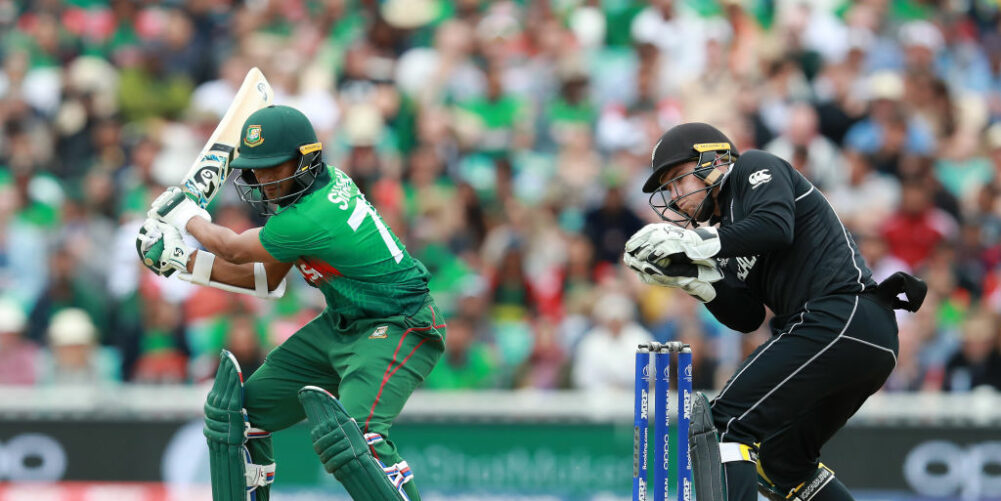It was the marquee match of the tournament, making worldwide headlines far beyond cricket’s heartland. One billion people watched on television apparently – although realistically the figure is far lower – neighbouring foes India and Pakistan square off in Manchester in one of the rare matches between the rivals.
Like so many one-sided matches between them
over the years, it was unfortunately a fizzer. India reinforced their title
credentials with a romp over a Pakistan team that looks like a mess.
The only silver lining was at least the
blockbuster game eventuated after grave fears that there would be another
washout. The temperamental weather for once held off long enough – otherwise it
really would have been a disaster for the ICC – but the result was not what the
tournament needed.
At its midway mark, the top four are
breaking away, meaning there is the likelihood that the back end of the
never-ending round robin stage will be marred by dead rubbers. And there is
still over two weeks until the semi-finals start.
The remaining hope is that South Africa can
eventually knock over a top team and Bangladesh – the feel-good story of a
fairly lacklustre tournament so far – continue their giant killing run. This
isn’t being smug in hindsight, but a lot of what’s happened was pretty
inevitable.
It’s true that the rain has played havoc,
but England, India and Australia were always pretty much guaranteed to make the
semi-finals unless something calamitous happened.
Meaning the intrigue centred on the last
spot. New Zealand, as their proud World Cup history suggests, have been rock
solid and look headed for the semis. South Africa’s sluggish start has not
helped matters – although not entirely unexpected given their shaky line-up –
while the bad Pakistan has unfortunately showed up. Ditto for the West Indies
after a bright start.
Sri Lanka are in a tailspin right now and
Afghanistan – the cult favourite four years ago – have been disappointing due
to a toxic mixture of in-fighting and inexperience. Perhaps it’s a reflection
of cricket’s state at the moment with only a few teams genuinely in title
contention. Maybe, no matter what the format, the tournament would be mired
with periods of lethargy.
Still, it’s hard to believe cricket’s
showpiece tournament couldn’t be reconfigured better. Figuring out what is
indeed the best format has long been tricky underlined by it being continually
changed over the years.
It’s particularly thorny because, of
course, there is the matter of maximising India’s games – and also ensuring the
India-Pakistan bonanza – to satisfy broadcasters.
Once India and Pakistan were knocked out
early in the 2007 edition, the decision was inevitably made to revert to the
format used in 1992 – a tournament, to be fair, that is rated as one of the
very best. But things weren’t so skewed to the ‘big three’ teams back then
making the tournament far more even and compelling.
And, these days, one would hope there is more proactive measures in developing cricket beyond the traditional sphere, which makes the decision to cull the World Cup to a measly 10 teams so disappointing.

Personally, I quite like the 2007 format
which had 16 teams – the most ever – spread over four groups. And there is
something gripping about having a ‘Group of Death’, which adds so much intrigue
to the FIFA World Cup, and seeing favourites shockingly bundled out early like
Germany last year. But the Super Eight phase was a bit nonsensical, further
underlining that the ICC have never quite gotten the formula right.
Although I did like how the past two World
Cups had quarter-finals. More knockout games, the better as far as I’m
concerned. It’s easy to forget but Australia’s rampaging triumph at the last
World Cup looked in peril in the quarter-finals against Pakistan, who are
exactly the type of team you don’t want to play in a knockout game due to their
unpredictability.
Having more sudden death games ensures the
tournament feels faster and has a pulse, while also providing some of those
X-factor teams – such as Pakistan or the West Indies – an opportunity to
perform an unexpected upset. Which is, when you think of it, what makes World
Cups – of any sport – so memorable.
Maybe the best proposal I’ve seen floated
around is a 14-team competition split into two groups. It ensures India gets
their quota of games, while expanding the tournament to a more acceptable
number of teams.
The winner of each group qualifies directly
into the semi-finals, while two v three meet in the two quarter-finals.
Another digestible alternative – if the
current 10-team continues – would be to copy the IPL, which also has a top four
model but the winner of the one v two semi-final qualifies for the final while
the loser plays the winner of three v four.
In the advent of the semi-finalists being
decided well in advance, something that threatens to be the case now, at least
the spur of finishing top two adds more meaning for those teams and their
games.
Let’s be honest here. For an already
protracted tournament, the lack of drama and narrative is jarring. Hopefully –
surely – there will be some twists coming up and perhaps the knockout stages,
when they finally arrive, will be epic.
But with the format locked in for the 2023 World Cup in India, it would be wise for the ICC to reconsider this outdated model in a bid to iron out potential dead patches.
TRISTAN LAVALETTE / Getty Images















